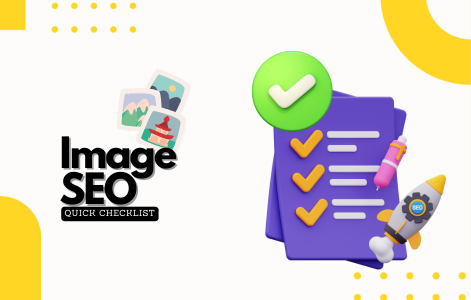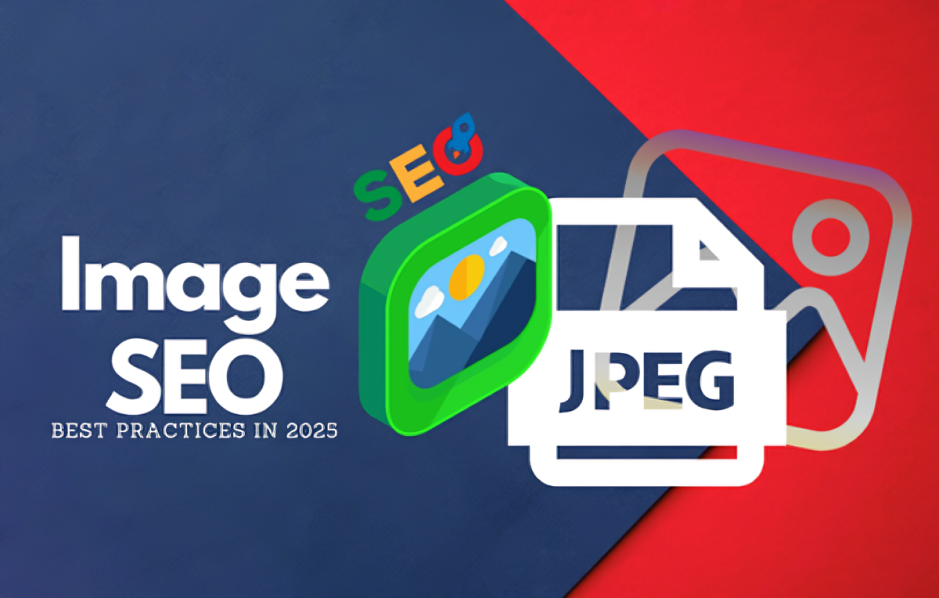In today’s digital world, images are not just design elements – they’re essential for content, engagement, and SEO. As more websites rely on AI tools to generate visuals, managing these images with proper SEO practices becomes even more important. From stock photos to AI-generated art, all visuals should follow search engine guidelines for better ranking and discoverability. Yet, one crucial detail is often overlooked: the image URL. While many focus on file size or alt text, using consistent URLs can make a big difference in performance.
We live in a time where visual content changes fast. AI tools can create images within seconds, but SEO is still about structure and consistency. If your image URLs are constantly changing or messy, you’re creating a barrier for search engines. Let’s explore how and why consistent URLs are a best practice for image SEO, especially when your site depends heavily on visuals.
Image SEO Is More Than Just Alt Text and Compression
Many think optimizing an image means adding alt text and compressing the file. It is really important, as we all know, but that is not the end of the scenario. Image SEO includes several parts:
- ➽ Descriptive file names
- ➽ Optimized formats (WebP, JPEG, etc.)
- ➽ Structured data and image sitemaps
- ➽ Alt text for accessibility
- ➽ Proper folder structure and consistent image URLs
All of these work together to make your images search-friendly. Even if you use a top AI tool to create them, skipping proper SEO steps means missed opportunities. A strong image setup can also benefit web development projects by improving speed and discoverability.
What Are Consistent Image URLs and Why Do They Matter?
A consistent URL means using a static, predictable path for an image. It does not employ dynamic or session-based file names, which can confound search engines. Let’s break this down:
| ‣ Good example: /assets/images/services/web-design-banner.jpg ‣ Bad example: /uploads/tmp/2025/ai123_img_4552.jpg |
Consistent URLs offer several advantages:
- ➽ They help search engines crawl and re-index images easily.
- ➽ They retain link value when images are shared or embedded.
- ➽ They avoid duplicate content signals.
- ➽ They allow better caching and CDN performance.
Using clear URLs is essential when you hire web designer teams who manage large-scale image libraries. A structured folder path helps your development team stay organized.

AI-Generated Images Need Extra Attention
AI tools generate thousands of unique images, but often assign random names or paths. These might affect your SEO if not used properly. Here’s how you can take control:
- ➽ Rename every image with relevant keywords.
- ➽ Place images in a logical folder structure.
- ➽ Avoid uploading directly from AI tools without editing file data.
| ‣ For example, instead of using a file named img_45generated.jpg, rename it to homepage-hero-fintech.jpg and save it under /assets/images/homepage/. |
Most importantly, Don’t mess with the image link once it’s live. Any change can lead to broken links or lost traffic.
Steps to Maintain Consistent URLs Across Your Website
You don’t need complex tools to keep your URLs consistent – just the right habits:
- ➽ Stick to a clean folder structure: /blog/images/, /services/images/, etc.
- ➽ Avoid renaming files after publishing.
- ➽ Use CMS tools or plugins that preserve file paths.
- ➽ When necessary, set up proper 301 redirects for old image URLs.
If you are building a custom site, your web design approach should include image URL planning from the start. This avoids errors down the line and improves performance.
The Role of CDNs and Image Delivery in URL Consistency
Using a Content Delivery Network (CDN) can speed up image loading, but it can also affect URLs. Some CDNs may auto-generate new links. To avoid SEO issues:
- ➽ Always use origin URLs in your sitemap.
- ➽ Add canonical tags to images when delivering them through a CDN.
- ➽ Use a CDN that lets you customize paths.
For best results, configure your CMS and CDN to serve images under your own domain structure. This ensures that images remain part of your indexed assets.
Power Trio: Alt Text, File Name, and URL Structure
A good image SEO strategy combines three things:
- ➀ Alt Text: Describe what’s in the image using relevant words.
- ➁ File Name: Use dashes/hyphens to split words, making names clear and to the point.
- ➂ URL Path: Place images in the right folder, and keep the name stable.
Here’s a great example:
| ‣ Alt text: “Team collaboration in a startup environment” ‣ File name: team-collaboration-startup.jpg ‣ URL: /about/images/team-collaboration-startup.jpg |
These small details help your site rank better, load faster, and look more professional.
Tools to Manage Image SEO and URL Consistency
Managing hundreds of images manually is tough, but several tools can help:
- ➽ Screaming Frog: Checks for broken images and missing alt text
- ➽ Google Search Console: Detailed information on the performance of used images.
- ➽ Sitebulb: Great for visual SEO audits
- ➽ WordPress SEO Plugins: Yoast, RankMath support custom image paths
When managing AI-generated content or working on advanced web development, these tools can save time and reduce SEO risks.

Quick Image SEO Checklist
❏ Use descriptive, keyword-rich file names (e.g., product-red-running-shoes.jpg)
❏ Add clear and relevant alt text for every image
❏ Use consistent folder structure (e.g., /assets/images/services/)
❏ Avoid changing image URLs after publishing
❏ Compress images without losing quality (use tools like TinyPNG or Squoosh)
❏ Choose the right format: WebP for performance, JPEG/PNG for compatibility
❏ Include images in XML sitemaps
❏ Set canonical tags for CDN-served images
❏ Use lazy loading for faster page speed
❏ Rename AI-generated images before uploading
❏ Use CMS plugins that preserve original paths
❏ Set up 301 redirects if an image URL must change
What Happens When Image URLs Change Post-Publication?
Changing image URLs after your content goes live can be a serious mistake. It can lead to:
- ➽ Broken links across social media or other websites
- ➽ Lost rankings for image search
- ➽ Negative impact on user experience
- ➽ Errors in your sitemap or schema
Always plan your image structure before publishing. This is especially critical when you hire web designer experts or collaborate with multiple teams. A small change in folder name or structure can ripple across hundreds of pages.
Let Your Visuals Work Smarter, Not Harder
In this competitive digital world, image optimization is not optional – it’s mandatory. With AI-generated visuals becoming common, maintaining consistency is key. Even the best image won’t bring traffic if it’s hidden behind a messy URL or missing alt text. Following image SEO best practices ensures your site is discoverable and performs well across search engines.
Whether you run a blog, eCommerce store, or business website, structured visuals offer real value. Your team, tools, and design must work together to build a strong foundation.
If you’re unsure how to implement these practices, MindBees is here to help. Our team provides complete web design and web development solutions tailored for SEO performance. We can guide you in structuring, designing, and optimizing your site for today’s visual web.

